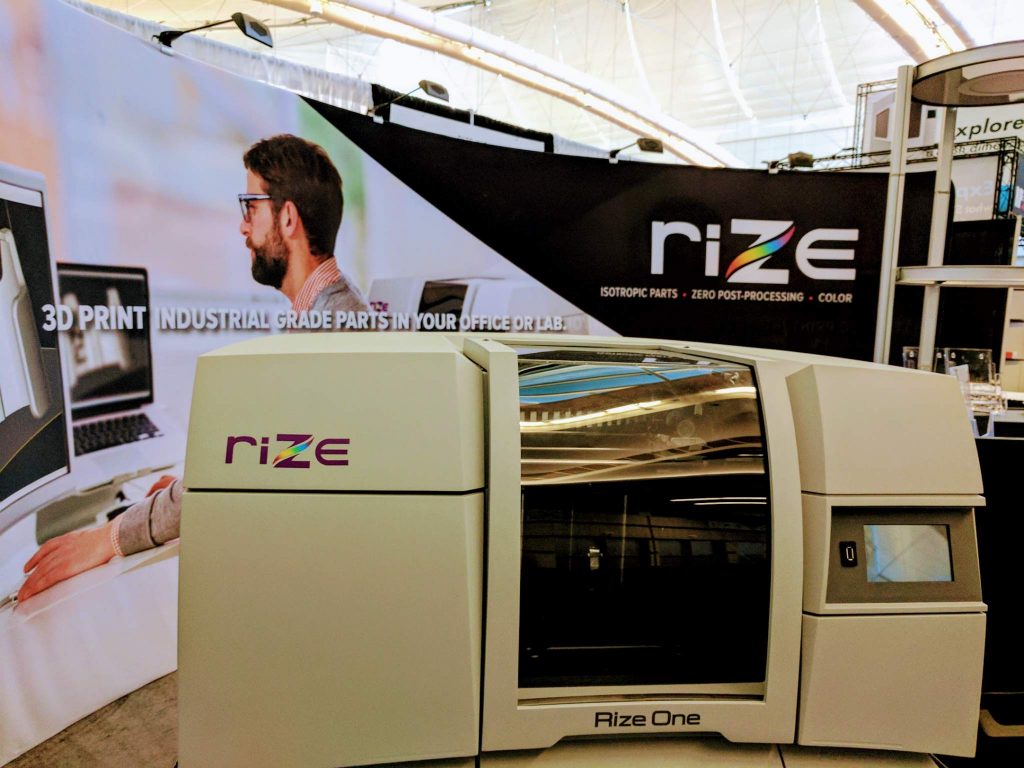Rize Inc., the developer of patented Augmented Polymer Deposition (APD) technology, has appointed Andy Kalambi, former CEO of the ENOVIA brand and global executive of 3DEXPERIENCE at Dassault Systèmes as its new President and CEO.
Ahead of the announcement, Industry spoke directly with Kalambi to understand more about his vision for the company, and how the the Rize One 3D printer will stand-up in the increasingly crowded market.
Rising priorities
A contributing factor to Kalambi accepting the role as President and CEO is that Rize has a product already on the market. “The good news that I have when coming into this company,” he says, “is that we have a product which is ready, shipping and on the market.”
“We are not collecting preorders, we are not promising customers something in the future, we have an existing product that is ready to be scaled.
“One of my priorities is to ensure that this product gets into the hands of users and customers who [can see] its usage and its value.”
All too often it seems, 3D printer providers tease products far from reaching commercial availability. One thing Kalambi assures of Rize is that it isn’t offering customers anything it can’t deliver.

Addressing additive at scale
“Achieving Additive at Scale” is a key area of focus that Kalambi believes is well addressed by Rize.
“Additive today is trying to scale-up to match up with the traditional, subtractive manufacturing environment […] What I believe Rize does is focus on two areas where scaling is very important.”
The first area he mentions is sustainability, defined by Kalambi as the technology’s ability to produce reliable and repeatable products, and overcome the challenges, namely post-processing and part strength, posed to existing 3D printed items.
Material sustainability
Of course material cost and availability is also essential to a sustainable product, “One of our strongest achievements right now is the operating cost of the machine,” explains Kalambi, “We have focused a lot on ensuring all these parts [materials, labour, power] are kept in check.”
Rize is also committed to material sustainability through an open materials platform, “The APD process is an inclusive process,” he adds, “It’s inclusive in terms of being able to bring materials from many areas. We’re just planning out our roadmap in terms of all the kinds of materials you will to bring into the printer.”
 Industry.” width=”1024″ height=”768″ srcset=”https://3dprintingindustry.com/wp-content/uploads/2017/09/FullSizeRender-1024×768.jpg 1024w, https://3dprintingindustry.com/wp-content/uploads/2017/09/FullSizeRender-770×578.jpg 770w, https://3dprintingindustry.com/wp-content/uploads/2017/09/FullSizeRender-200×150.jpg 200w, https://3dprintingindustry.com/wp-content/uploads/2017/09/FullSizeRender-500×375.jpg 500w” sizes=”(max-width: 1024px) 100vw, 1024px” />
Industry.” width=”1024″ height=”768″ srcset=”https://3dprintingindustry.com/wp-content/uploads/2017/09/FullSizeRender-1024×768.jpg 1024w, https://3dprintingindustry.com/wp-content/uploads/2017/09/FullSizeRender-770×578.jpg 770w, https://3dprintingindustry.com/wp-content/uploads/2017/09/FullSizeRender-200×150.jpg 200w, https://3dprintingindustry.com/wp-content/uploads/2017/09/FullSizeRender-500×375.jpg 500w” sizes=”(max-width: 1024px) 100vw, 1024px” />Position among the competition
The Rize One 3D printer has been commercially available since June 2017, just six months after the initial launch of the system. Details of the first batch of Rize customers are yet to be announced, though Kalambi assures that this information will be made available in the next few months.
Pressed about the Rize One’s stance among the competition, its helpful to hear that Kalambi keeps a balanced approach.
“I don’t think we are trying to specifically compete with other vendors because we have not created another FDM machine or another multi jet machine,”
“To me it’s not really about competing with existing players,” he concludes, “because it’s trying to solve the problems that our customers have not been able to solve [with other means].”
For all the latest news and exclusive interviews subscribe to the Industry newsletter, follow us on Twitter and like us on Facebook.
Searching for your next career move? Register for 3D printing jobs here.
Featured image shows Rize’s newly appointed President and CEO Andy Kalambi. Photo via Rize.

Leave A Comment